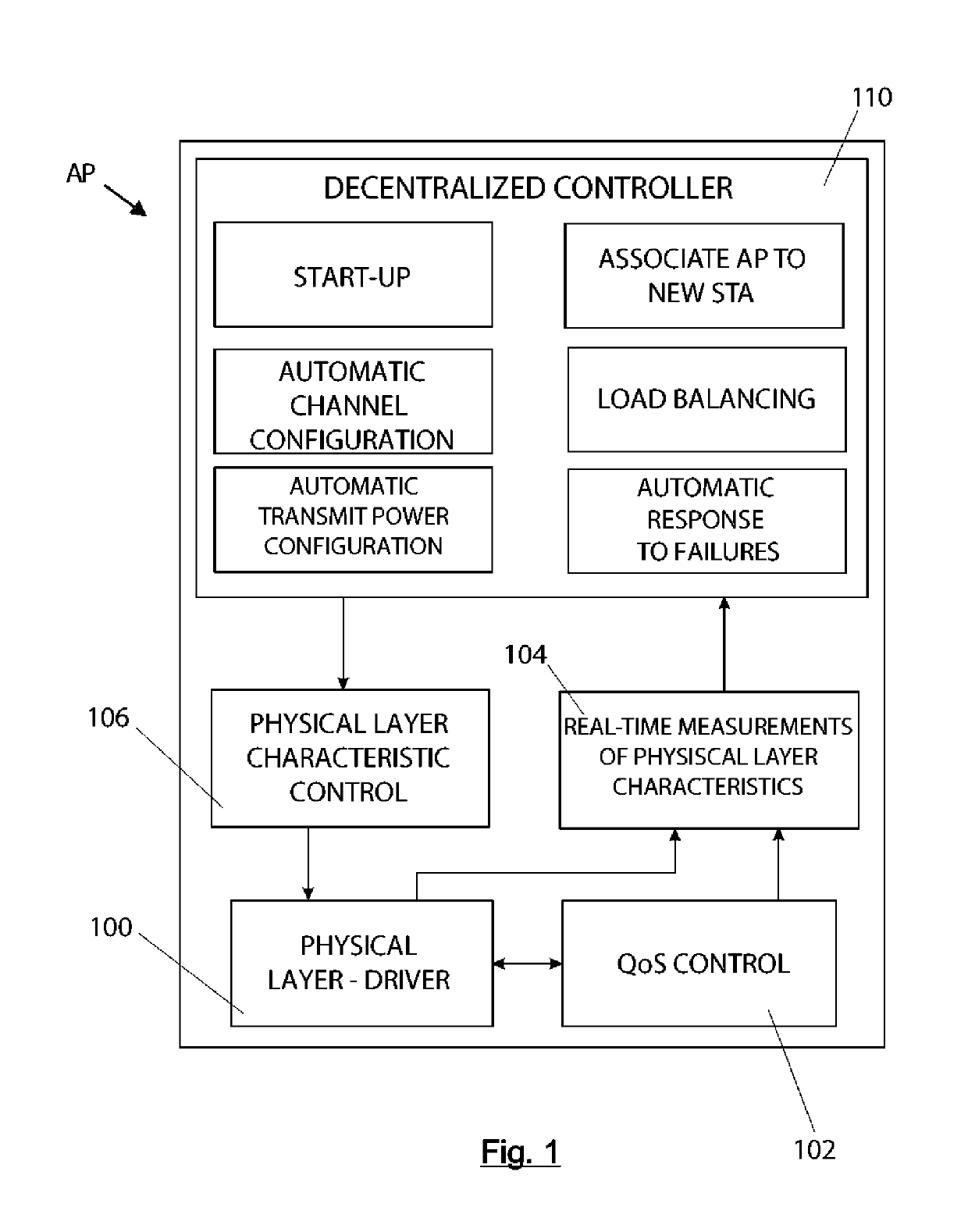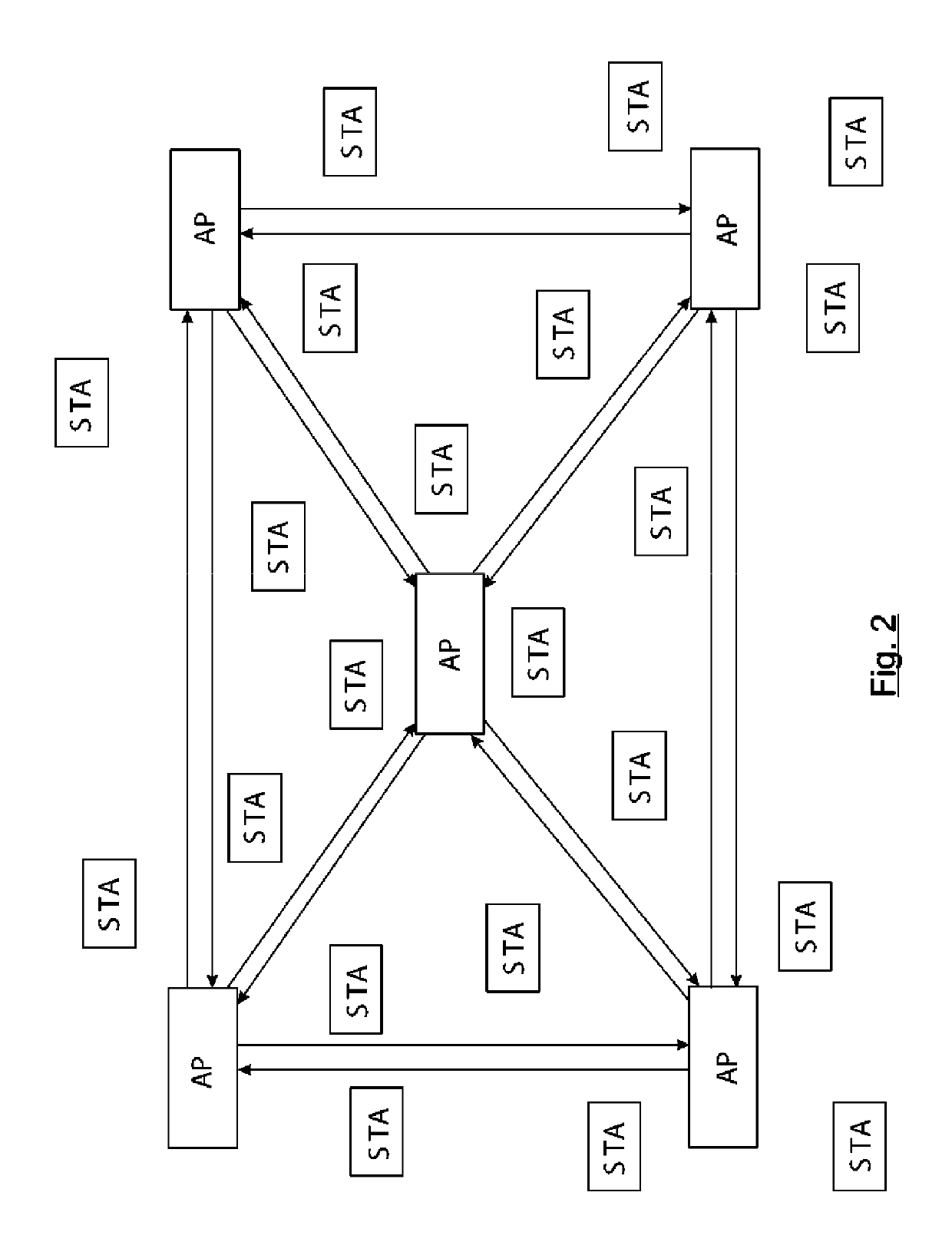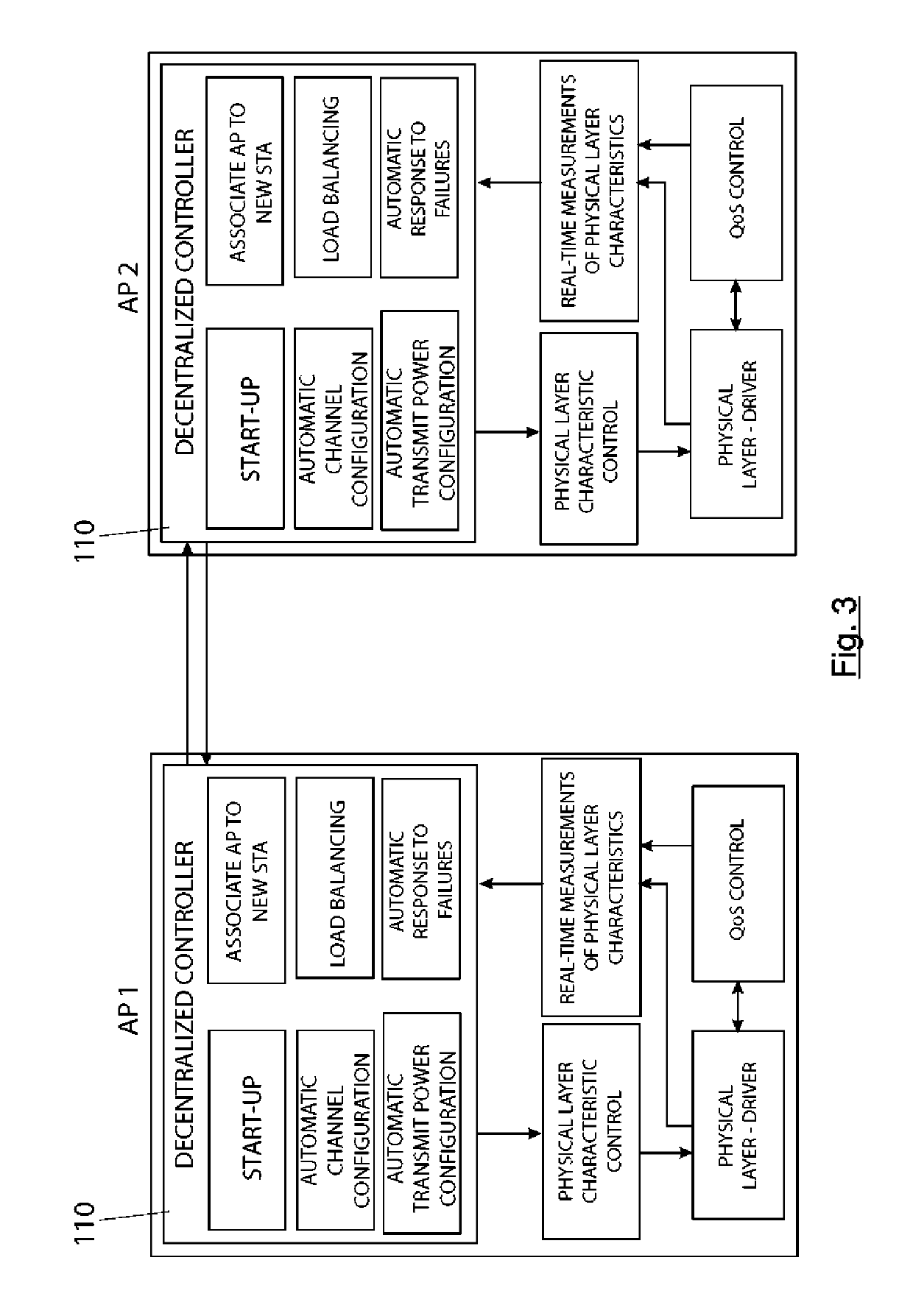System and method for decentralized control of wireless networks
a wireless network and wireless network technology, applied in the field of wireless network system and method, can solve the problems of increasing the number of instances of interference, increasing the level of electromagnetic noise in the environment, and preventing possible conflicts, so as to improve the overall operation of the wireless network, eliminate or reduce the impact of these conflicts
- Summary
- Abstract
- Description
- Claims
- Application Information
AI Technical Summary
Benefits of technology
Problems solved by technology
Method used
Image
Examples
Embodiment Construction
[0083]The present invention relates to a system for decentralized control of wireless networks, made up of a set of access points (APs). In a preferred embodiment, by way of example it may be applied in an airport. FIG. 1 shows the architecture of each access point (AP) in a decentralized controller network, which comprises the following units:[0084]Physical layer driver (100).[0085]QoS control unit (102).[0086]Physical layer measurement unit (104).[0087]Physical layer control unit (106).[0088]Decentralized controller (110).
[0089]FIG. 2 shows the deployment of a network of access points (AP) with the decentralized controller technology. FIG. 3 shows the communication of the decentralized controllers (110) between two access points (PA1, PA2).
[0090]The physical layer driver (100) provided by the manufacturer of the wireless network card of the access point is used to read the various parameters and configure the physical layer. An existing Linux library is used for communication betw...
PUM
 Login to View More
Login to View More Abstract
Description
Claims
Application Information
 Login to View More
Login to View More - R&D
- Intellectual Property
- Life Sciences
- Materials
- Tech Scout
- Unparalleled Data Quality
- Higher Quality Content
- 60% Fewer Hallucinations
Browse by: Latest US Patents, China's latest patents, Technical Efficacy Thesaurus, Application Domain, Technology Topic, Popular Technical Reports.
© 2025 PatSnap. All rights reserved.Legal|Privacy policy|Modern Slavery Act Transparency Statement|Sitemap|About US| Contact US: help@patsnap.com



